It was famously said, “You don’t know where you’re going until you know where you’ve been.”
One meaning touches on philosophical questions about looking back to clues to where you are going, and the more ominous interpretation is that those who are unaware of history are doomed to repeat it. This year, the front runner for Best Picture is silent-era homage The Artist, which stands as a film that is well aware of its origins and intentionally repeats them in a modern-day dramedy.
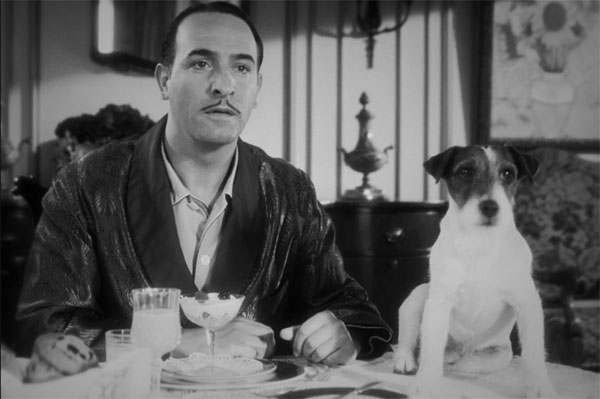
Current interest in the age before talkies dominated the silver screen is waning. Advocates of silent features are aging, general audience interest in movies is shrinking and a stigma exists among generation X and Y that these are boring “old fogie” works. The opposite could not be truer. Many still bring tears and laughter with the same ease they did upon the eve of their release and, simply, the magic of film is exemplified in the films of this era. Silent film may be behind us, but that does not mean it is a lost art.
In honor of the aforementioned soundless flick The Artist, we're going to take a peek (though an all-too-brief one) at some of the most influential stars that made silent cinema their home and a few of the films that bridged the way to movies as we know and love them today.
The Stars of An Age
The silent film era unveiled what are arguably the purest (as we would define them today) “movie stars.” Especially in the comedy genre, many of these draws were as multi-talented as they were wildly popular. They enjoyed stints in Vaudeville, on Broadway (and of course film) and were actors, writers, producers, directors and composers. Although there are many stars of more dramatic works that are more than noteworthy (Jannings, Deitrich, Pickford, Gish, to name a few), the slapstick antics and demanding physical comedy of Chaplin, Keaton, Laurel and Hardy and Harold Lloyd set standards (for what I believe to be the hardest type of comedy) that has not been matched to this day—all without ever being heard.
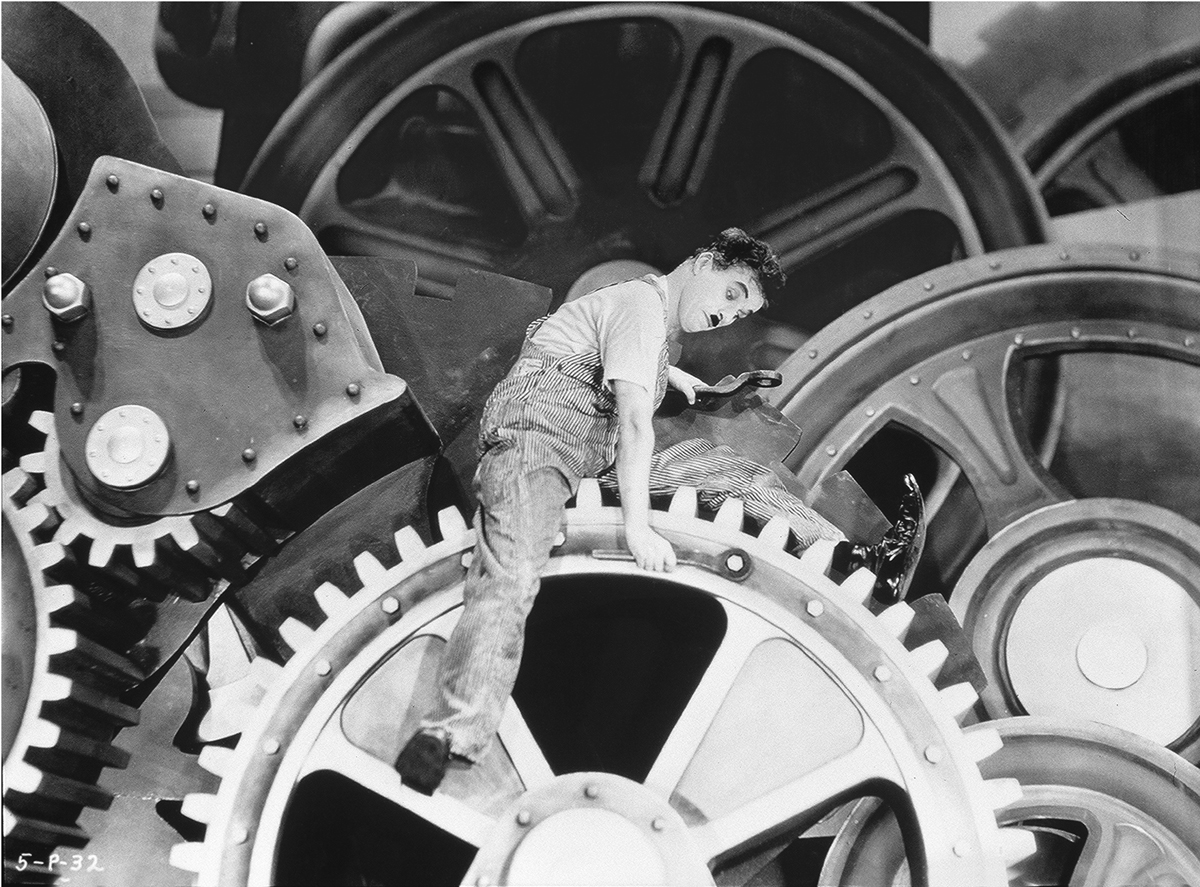
Charlie Chaplin
Simon Says ~ One of the few huge stars of the era that made a successful transition (albeit brief) to “talkies” with masterpieces The Great Dictator and Limelight, Chaplin was the king of physical comedy. He crafted some films with biting satire and others like City Lights that had huge influences on the romantic comedy genre. When considering comedies today, there is a stigma that they are made with less care than a dramatic one. With Chaplin, the care he took both while directing and acting neared the realm of compulsive, taking dozens of shots before he was satisfied. He was a true artist and cinematic pioneer.
Max Says ~ Yes sir, despite a questionable personal life, I’ve got to hand it to Mr. Chaplin. The man had a career that spanned more than 75 years. Not only that, but he was also instrumental in helping found United Artists, a studio that has lasted since 1919 (take that MGM). Chaplin didn’t only possess raw talent; he possessed the means to channel his abilities in a variety of fashions—direction, acting, producing or even composing. His multi-faceted nature was, in many ways, the symbol of the silent-film star: a performer with limitless potential, depth, commitment and expertise. And in that regard, our hats are off to you, Mr. Chaplin.
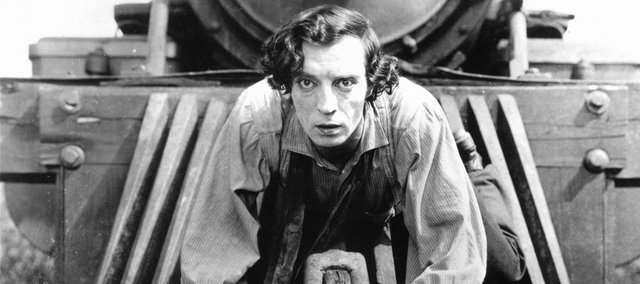
Buster Keaton
Simon Says ~ Like Chaplin, Keaton was a multi-talented artist, bringing a deadpan, stoic approach to his routines, always remaining seemingly unfazed as outlandish circumstance unfolded around him. Another staple of his films—which are rather terrifying when looking back on them today—was his fearlessness when throwing himself into a bit. The General provides some of the most daring physical comedy ever put to film and makes the gang from Jackass look like pansy schoolchildren. Would you sit on the pistons of a moving locomotive? Didn’t think so.
Max Says ~ Simon, you couldn’t have said it better. Screw the Jackass guys. Keaton was an actor whose physical commitment to each and every role was so focused and on point that idiocy or not, was absolutely hysterical. The statues on Easter Island could take a few notes from Keaton, who could out-stare a corpse and outlive Solomon Grundy. What was remarkable about the man was despite his deadpan appearance/performances, he was likely one of the most emotive actors of his day, let alone all time. His passion for the absurdist nature of silent films is never clearer than in The General, and if you haven’t seen it, hurry up.
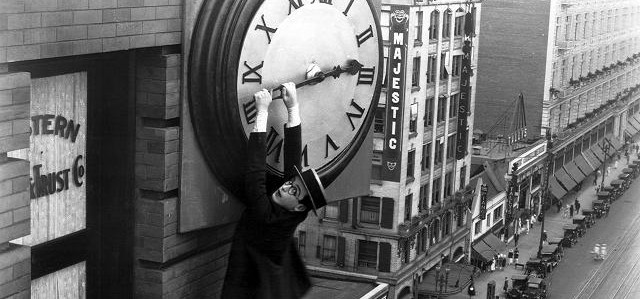
Harold Lloyd
Simon Says ~ His iconic “clock-dangling” scene in Safety Last! is but one of more than 200 films that Harold Lloyd starred in over his 30-year career spanning the transition from shorts to features to talkies. Lloyd was also a writer/producer/director and stood shoulder to shoulder with Chaplin and Keaton as one of the most iconic entertainers of the era. All beginning with the “Lonesome Luke” character he portrayed in dozens of shorts, he became the swooper to Chaplin’s basher, releasing 12 feature films in the 1920s to Chaplin’s three, normally integrating outlandish high-energy sequences more akin to Keaton. However, he was always an individual and never a mimic, just another icon that trail-blazed comedy on the big screen.
Max Says ~ You bring up an interesting point Simon, in how Lloyd was an individual rather than a mimic. It is easy to say that Lloyd's style was akin to Chaplin and Keaton, but that would be a gross misrepresentation of his work. Unlike Keaton, for example, Lloyd was a little easier for audiences to respond to given his character's eternal optimism and "everyman" appearance, not to mention he was arguably the first to make glasses chic. Despite throwing himself in dangerous situations, Lloyd brought a touch more humanity (and dare I say believability) to his outlandish scenarios. Combine that with the fact that Lloyd was a man who played with live ammunition—literally—as he blew off his thumb with an actual bomb. That's commitment man to an art, man. You can't question that.
The Films of a Time
The "movie star" image bred and has thrived as a result of the Silent Era, but there was one star that no performer could outshine: the filmstrip itself. What shocked and engaged audiences was not only the men and women who put on the show, but also the nature of movies themselves. In a relatively short amount of time, films went from being randomized events captured on celluloid to full-fledged productions requiring actors, sets, scripts, etc., giving birth to filmmaking as we know it today. It was also a great time of experimentation on the limits (or lack thereof) of what could be accomplished in film: narrative, editing, set design, special effects and social commentary. All advanced thanks in part to the below films and those who created them.
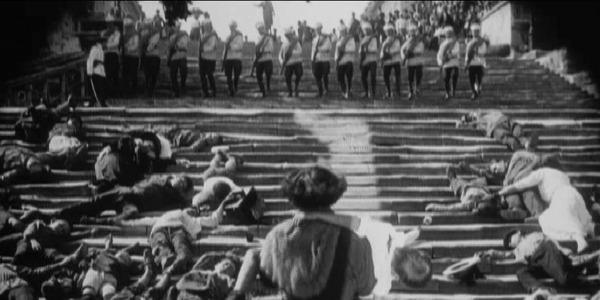
Battleship Potemkin
Max Says ~ Inciting a reaction has always been a goal of cinema, but never more so than the earliest days of its existence, when propaganda films were as much about social commentary as they were experiments in the newborn field of filmmaking. One of the more famous examples of this is Sergei Eisenstein's 1925 film Battleship Potemkin, in which the crew of a Russian battleship revolts against the government by killing its commanding officer (a Tsarist) and taking control of the titular ship.
If you have a passing interest in film (or have ever taken an introduction to film class), chances are you have heard of "Potemkin." At the very least, you know the Odessa Staircase sequence. Famous for its scale as well as its experimental editing, "Potemkin" is to be remembered for being a pioneer when it comes to rhythm and montage from a visual setting. While it may not be as "dangerous" as it was once considered, that doesn't make it any less powerful.
Simon Says ~ Couldn’t agree more, Max. Not only is “Potemkin” a must-see for any film buff, it is also infinitely accessible to even those with just a passing interest. This one of the early benchmarks for future feature-length editing and the Odessa steps sequence is one of the most iconic. Remember that iconic train station shootout in The Untouchables? That’s a direct homage to Battleship Potemkin and a nod that few recognize. These movies still have a place in the modern age of cinema even if it's just serving as inspiration.
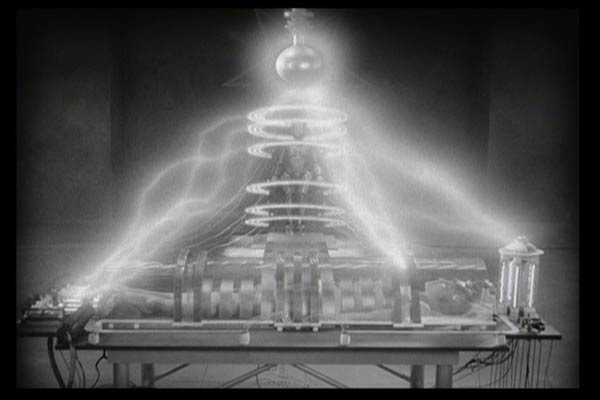
Metropolis
Max Says ~ Sporting one of the coolest posters ever, this 1927 silent flick by Fritz Lang has stood the test of time. Much like "Potemkin," the film deals with relations between the lower and upper-class members of society. Set in a futuristic "mega city," the "managers" dwell in gorgeous high-rises while workers spend most of their lives underground. As we all know, that never goes over well in a sci-fi movie.
The film is as much an expressionist take on class relations as it is a love letter to various art styles, notably Art Deco. The influence of the film has carried over into several mediums; one can't help but think of Metropolis when playing through a round of Bioshock. It's one-part cautionary tale, one-part creature feature and one-part special effects extravaganza that still holds up to this day. In regards to sci-fi films over the last century, the strength of Metropolis cannot be denied or missed.
Simon Says ~ Screw Transformers, bah to Avatar. If you want a stunning tableau of early special effects, merely look at a screenshot and witness what Lang achieved. Metropolis calls to mind the vision and ingenuity that many indie filmmakers possess today. They often have very little to work with but have determination to spare. I called Battleship Potemkin a very accessible example of silent film; the same cannot be said for Metropolis I’m afraid, as it is frequently maddening. However, as you eloquently put it, Metropolis should not be denied or missed as it is an experience that has never been matched.
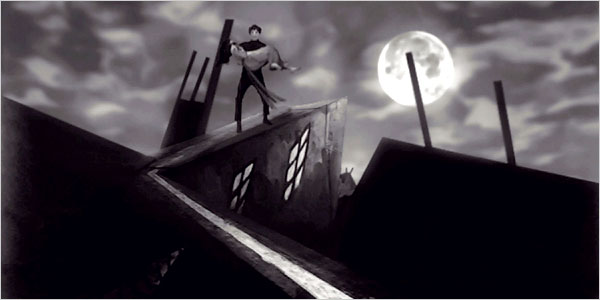
The Cabinet of Dr. Caligari
Max Says ~ Another product of the German Expressionist movement, 1920's The Cabinet of Dr. Caligari is also one of the earliest entries in the horror genre. Nosferatu wouldn't come out for two more years. It is also (arguably) the first to feature a twist ending and certainly one of the most vibrant looking silent films for its time. It looks like a nightmare that Dr. Seuss may have had.
Focusing on the psychotic titular doctor and his sleepwalking servant (who is manipulated into killing for the doctor), "Caligari" is a remarkable example of the importance of set design, color and performances in film—silent or not. The extreme nature of its presentation may be offsetting or just plain goofy to some, but this was one of the earliest films to toy with bringing the imagination (in all its psychosis) front and center, painting it in a less than whimsical light. "Caligari" is a pillar for so many films to come, whether they be horror, fantasy or drama.
Simon Says ~ Forget Dr. Seuss’ nightmare, this would be the product of the good doctor’s psychotic break. My craving for deep-fried squid whenever I hear the title notwithstanding, this is a fully realized masterpiece of psychological terror and all without idiotic “boo” moments. The first time I saw “Dr. Caligari” I was immensely impressed by the twist you mentioned but waved off its importance, having been so accustomed to such an ending in every modern horror flick. This is a rare horror movie that has stood the test of time, maybe not in the usual sense, but in a more important one.